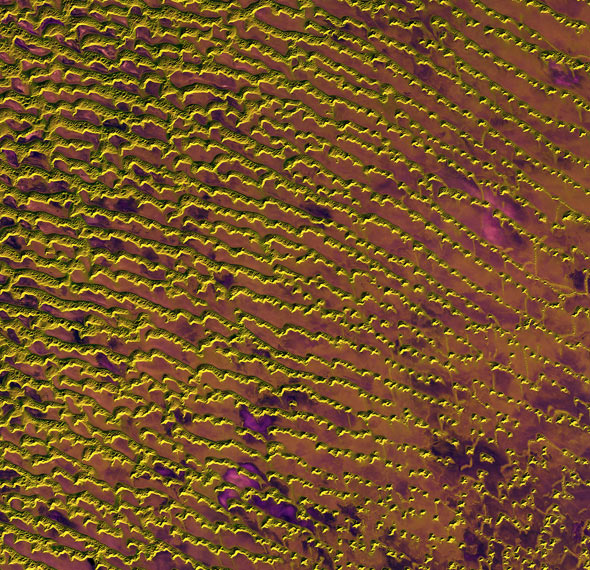Create a free profile to get unlimited access to exclusive videos, sweepstakes, and more!
These Dunes Are the Pits. Or Vice Versa.

I love a good coincidence. Especially a series of them. To wit:
Last week I wrote an article about a massively viral optical illusion photo of a brick wall—if you haven’t seen it yet, I won’t spoil it; just go to my post and be amazed.
The very next post I put up after that had images taken by the Dawn spacecraft of the protoplanet Ceres, showing the cratered surface.
The funny thing is I got a few emails and tweets from people saying they were seeing the craters not as depressions in the surface, but as domes popping up out of it.
I had to chuckle about that. That’s another illusion I know very well, usually called the crater illusion. It was a funny (if minor) coincidence that people saw it in the post following a post about an illusion. It was funnier to me because in the brick wall post, I actually (and also coincidentally) linked to one of my favorite examples of the crater illusion, where dunes in the north African desert look like holes in the ground.
The icing on the coincidental cake? The very next day, the European Space Agency posted a photo of the Rub al Khali desert in the Arabian Peninsula, showing this same illusion, also featuring sand dunes!
The photo at the top of this post shows a part of the (much larger) image, taken by the Sentinel-2A satellite in December 2015. To me, the illusion that the dunes are actually pits in the surface is very strong. Does it look that way to you?
The reason for this is that we evolved to interpret scenes assuming the light is coming from above, like sunlight. When we see a photo, our brains assume the sunlight is coming down from the top of the picture. Something popping up out of the surface (like a sand dune) would be illuminated by that source of light, with the upper part of it (the part nearer the top of the photo) bright and the lower part shadowed.
But in the Sentinel photo, the lower parts of the dunes are bright, and the upper parts dark. That’s because the sunlight is coming from more or less the bottom part of the photo. But our brains have a hard time with that, assume the light is coming from above, and think the dunes must actually be pits. To our addled brains, something with its brighter part toward the bottom must be depressions in the surface, not something popping up out of it. So we see the dunes as pits.
Don’t believe me? I flipped the image over. Take a look:
Now that the light looks like it's coming from the top of the image, do they look like dunes to you? They do to me!
I played with the images for a while and found the illusion to be stronger when I shrank it down quite a bit; if I zoomed in on the dunes I saw them as dunes, and not pits. That was odd. I suspect the wavy lines of dunes give clues to my brain that the lighting doesn’t make sense if they’re pits (especially where the dunes make tight Z-shaped jogs in the lines). Those clues are too small to resolve when the image is smaller, so the illusion is stronger.
As always, while fun, there’s an underlying message here too: Your brain is lying to you. All the time. It does not see the world for what it is, but instead interprets it through a vast number of filters and preconceptions.
What you see is not what you get. It’s a pretty important lesson to remember.


























